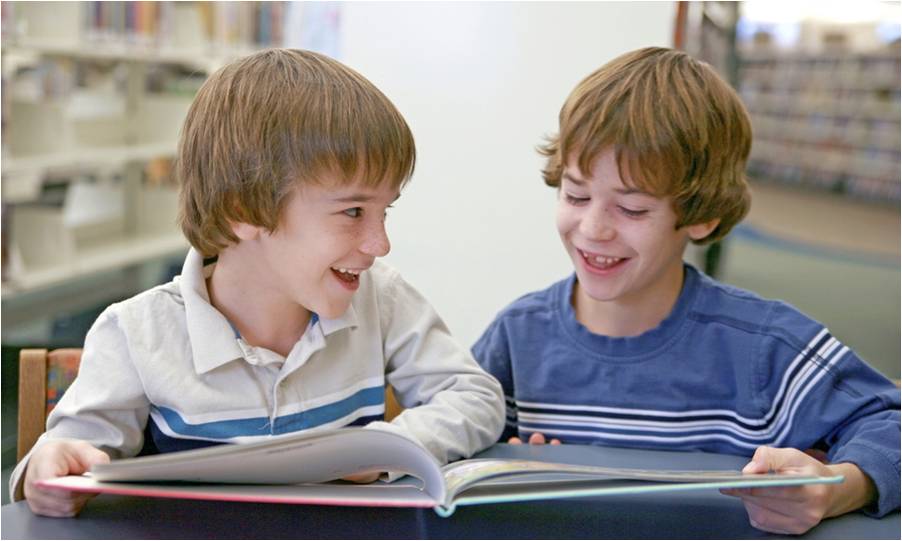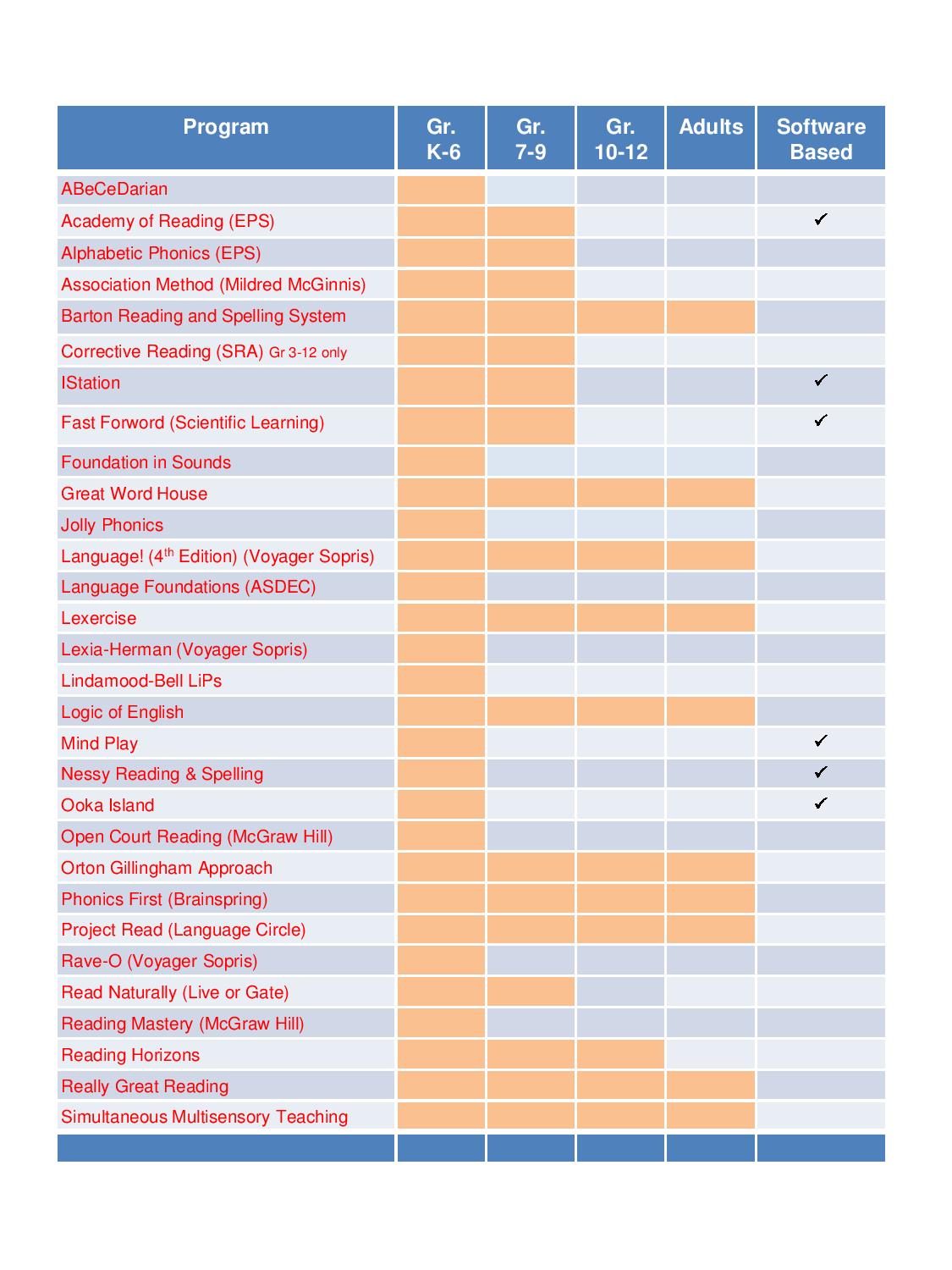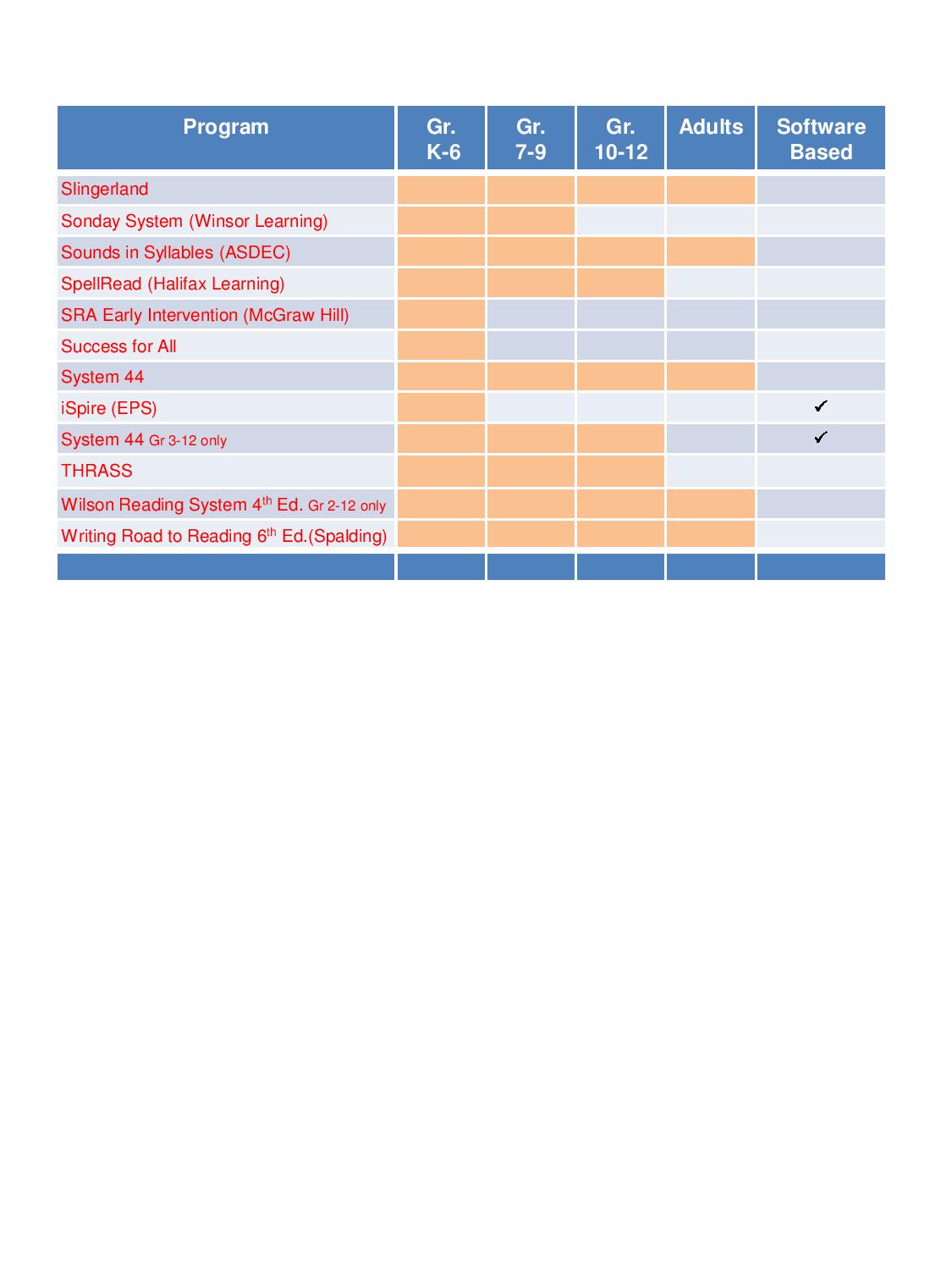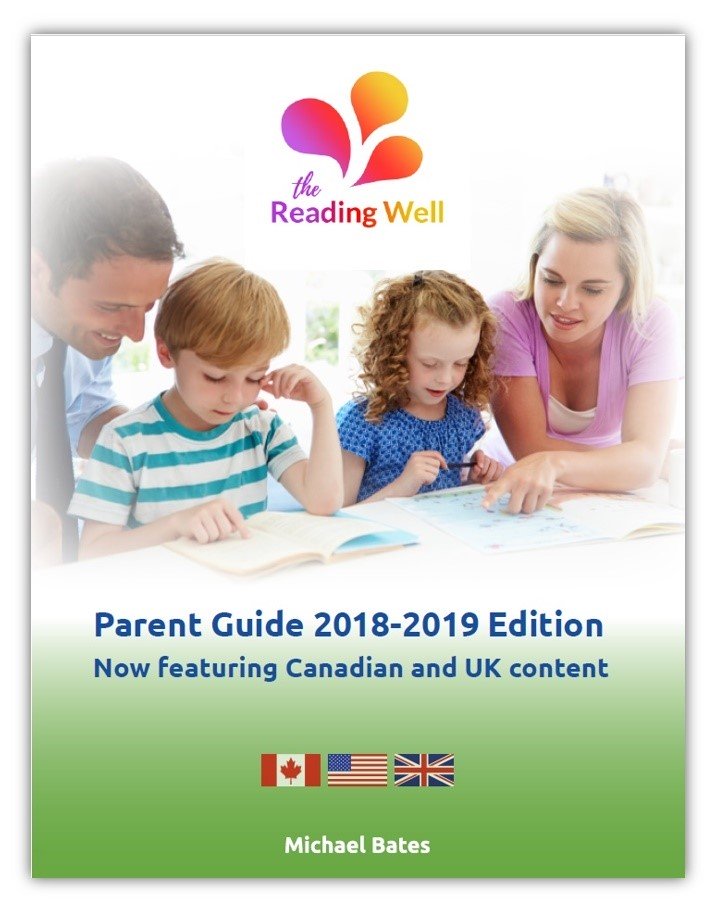Reading Programs that Work

Quick Facts
- Students with dyslexia require specific kinds of reading instruction
- Many reading programs are ineffective for dyslexic students
- The Orton Gillingham approach is the oldest and best researched for
teaching those with dyslexia
- Explicit, intensive and multisensory methods work best
- Content should include phonemic awareness, fluency and explicit instruction of spelling rules
- Assistive technology is opening the door to more efficient and effective methods for teaching reading
- Software based reading programs hold many advantages over traditional programs but have not been widely adopted—yet
How do you Teach a Child with Dyslexia to Read?
The research on dyslexia
treatment clearly shows that children with dyslexia need special kinds of
instruction in terms of both content and method. Below is a summary of what we know works.
Dyslexia Treatment: Content
According to the prominent dyslexia researcher Dr. Sally Shaywitz, in her book Overcoming Dyslexia, the key ingredients of effective early intervention programs are:
1) Systematic and direct instruction in:
- Phonemic Awareness
- Phonics
- Sounding out words
- Spelling
- Reading sight words
- Vocabulary and concepts
- Reading comprehension strategies
2) Practice applying these skills
in reading and writing: Practice means using them everyday from reading comic strips to writing e-mail.
3) Fluency training: Fluency is the ability to read quickly, smoothly, accurately and with good comprehension. When reading is slow and tough, kids spend all their energy to just sound out the words, often missing the meaning entirely.
4) Enriched language experiences: Interactive dialogue involving listening, speaking and story telling.
Dyslexia Treatment: Method
In terms of a successful method, the Orton Gillingham (OG) approach
to reading that was developed in the 1930s by
Samuel Torrey Orton and Anna Gillingham is still believed to be the most
effective dyslexia treatment. It is based on the following process
elements:

Personalized: Teaching begins with recognizing the differing needs of learners.
Multisensory: The simultaneous use of multiple senses including auditory, visual,
and kinesthetic (touch). For example, a
dyslexic learner is taught to see the letter A, say its name and sound and
write it in the air—all at the same time. The use of multisensory input is
thought to enhance memory storage and retrieval. Multisensory approaches can even be used for math.
Does Font Matter?
Much has been written in the media about special fonts for dyslexia. Discover if fonts can really make a difference in our Dyslexia Font and Style Guide.
Structured, Systematic, Sequential, and Cumulative: Language elements and rules are introduced in a linguistically logical, understandable order. Students go back to the very beginning of their language learning, to lay a proper foundation.
Beginning by reading and writing sounds in isolation (phonemes), then blending sounds into syllables and words. Elements of language—consonants, vowels, digraph blends, and diphthongs are introduced in an orderly fashion. Only later, learners proceed to advanced structural elements such as syllable types, roots, prefixes and suffixes.
Cognitive: Students study the many generalizations and rules that
govern the structure of language.
Flexible: Instructors ensure
the learner is not simply recognizing a pattern and applying it without
understanding. When confusion of a previously taught rule is discovered, it is
re-taught from the beginning.
Personal and Direct: Building a close teacher-student relationship
with continuous feedback and positive reinforcement leading to success and self
confidence.
5 Things You Can Start doing Today!
- Practice reading a very short story or poem out loud together until mastered, building fluency and confidence - research shows achieving fluency is crucial for becoming a successful reader.
- Read aloud to your child/student for as little as 15 minutes a day.
- Introduce audio books and magazines—available free from your local library.
- Motivate by recognizing good work—often!
- Read books yourself to model good reading habits.
Another Approach
There are other approaches that are not considered OG but offer comparable benefit through somewhat different methods. The Lindamood-Bell learning centers are one of the best examples.
Where to Begin
With your school
If your child is in a special
education program and/or has an Individualized Education Program (IEP), you
will be part of the planning for that program. Be sure to attend the meeting
where your child's plan is discussed. Ask
if the school is using a reading program that has been shown to work for students with dyslexia, one that meets the content and method criteria above. For more detailed information and advice on the IEP process (U.S. perspective), try this site on Special Education.
Unfortunately, sadly, and remarkably, most public schools will fail you at this point. They either don't have the right tools for dyslexia treatment, resource teachers, time or money to provide the kind of support your child may need. I hope your school is an exception.
What are the Actual Reading Programs?
Below is a list of reading programs that incorporate Orton Gillingham or equivalent approaches and which include emphasis on phonemic awareness, fluency, and strategies for spelling and comprehension. Your school and tutor should be using one of them or an equivalent. Updated August, 2018.

Programs Continued....

Software Based Systems Rising
Change is hard
The
education establishment has been slow to warm to the idea that
reading instruction should take place on a computer, be self directed
and fun. Especially those organizations that make most of their money
from training and certifying instructors.
We believe that computer based reading instruction programs will displace
many of the current paper book, flashcard and tile systems listed above—and soon!.
The migration of reading programs into the digital realm has been strikingly slow. While you can find countless apps to help with spelling or vocabulary, there are relatively few comprehensive software based reading programs suitable for dyslexic students. But consider the inherent advantages that software has over paper book, flashcard and tile type reading systems:
- Much lower cost for tutoring (very good for parents on a budget)
- Easy to incorporate almost all Orton Gillingham elements right into the software itself
- Immediate and continuous feedback
- Automatic adjustment of difficulty based on progress
- Infinite patience and the ability for students to work more independently
- Effortless and detailed progress tracking built right into the software
- Dramatically lowers the bar for the amount of training required to deliver a program
- Develops keyboarding skills and computer literacy
- Fun! Software is often game based, making reading fun—exactly what it should be.
Because of these advantages we believe that software based systems are the future of reading instruction for both home and the classroom.
Dyslexia Treatment: What Won't Work??
Any reading program that doesn't
incorporate the Orton Gillingham approach and the type of content noted earlier is less likely to work. The programs and interventions listed below may offer benefits to your child, but they will not likely help them make the kind of progress necessary to close the reading gap with their peers.
- Kumon
- Sylvan Learning
- Hooked on Phonics
- Reading Recovery
- Accelerated Reader
- Brain Gym
- Special Diets
Don't be afraid to experiment, but stick to proven programs for the core of your interventions
Where can I find a good reading program?
Explore links to local schools and tutoring centers that offer these kinds of dyslexia treatment programs.
Return to the top of Dyslexia Treatment
- Home ›
- Dyslexia Treatment

New! Comments
Share your thoughts or ideas! Leave us a comment in the box below. You can post it at this site only or on Facebook too, it's up to you.